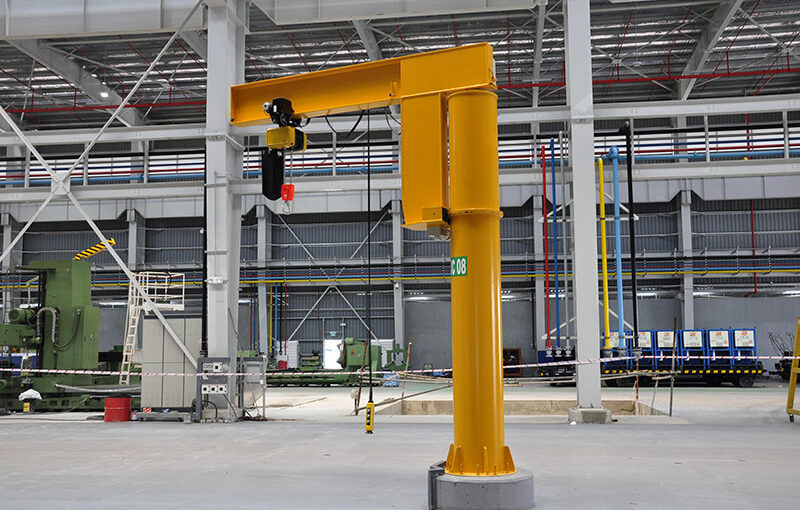The jib crane is a lifting equipment that has only emerged in recent years. Compared with the general crane, the jib crane has better performance. However, if the jib crane crane is used for a long time, there will be many problems of this kind or that. For example, the jib crane is overloaded for a long time, and the swing gear has two teeth broken from the tooth root. This fault can be repaired. So, how to repair the broken gear of the jib crane? Let Yuantai Crane explain it for you!
When welding and repairing gears, attention must be paid to avoid cracks. It is necessary to reduce the diffusible hydrogen content of the weld, reduce the tendency of hardening and heat input, and reduce the restraint stress of welding. Due to the large welding workload and long grinding time of surfacing the whole tooth, the restoration method of implanting tooth is selected.
Open T-slot
First, open the T-shaped groove at the bottom of the broken tooth with an angle grinder. The width of the upper mouth is the same as that of the original tooth. The width of the lower mouth of the swing arm is 40mm larger than the width of the upper mouth, and the groove depth is 30mm. Then, use an angle grinder to smooth the bottom of the groove and its surroundings, and finally measure the exact size of the T-shaped groove.
Making replacement teeth
- Make a replacement tooth according to the size of the T-slot and the original tooth, make the bottom of the replacement tooth of the jib crane match the T-slot, and the upper part is the shape of the original tooth, and then insert the replacement tooth in the opened T-slot Inside, pay attention not to be too tight when inserting. Check the relative position of the inserted replacement tooth to make the size of each part meet the requirements.
- Fix the replacement teeth with the countersunk head screws of the jib. After replacing the tooth setting, drill two 10.2mm holes in the direction perpendicular to the top surface of the tooth with a hand electric drill. The positions are respectively 20mm from the center point of the two ends of the tooth until the cast steel base is drilled, and then use 8.5mm. The drill bit drills a bottom hole on the cast steel substrate with a depth of about 25mm and taps M10 threads. Then, make a counterbore at the top of the tooth. Finally, fix the replacement teeth with M10 hexagon socket screws.


No Responses